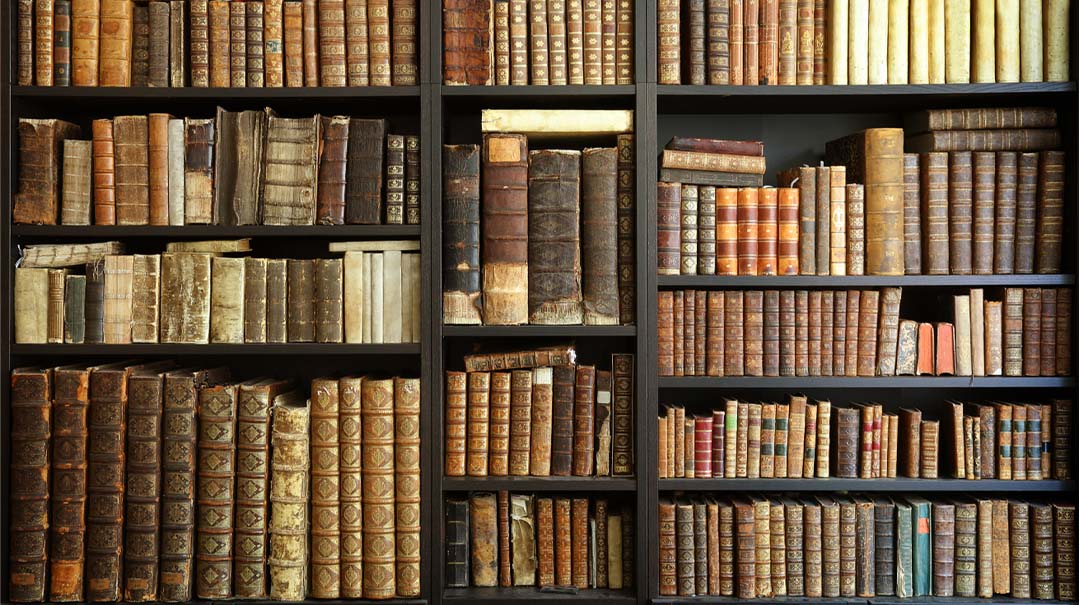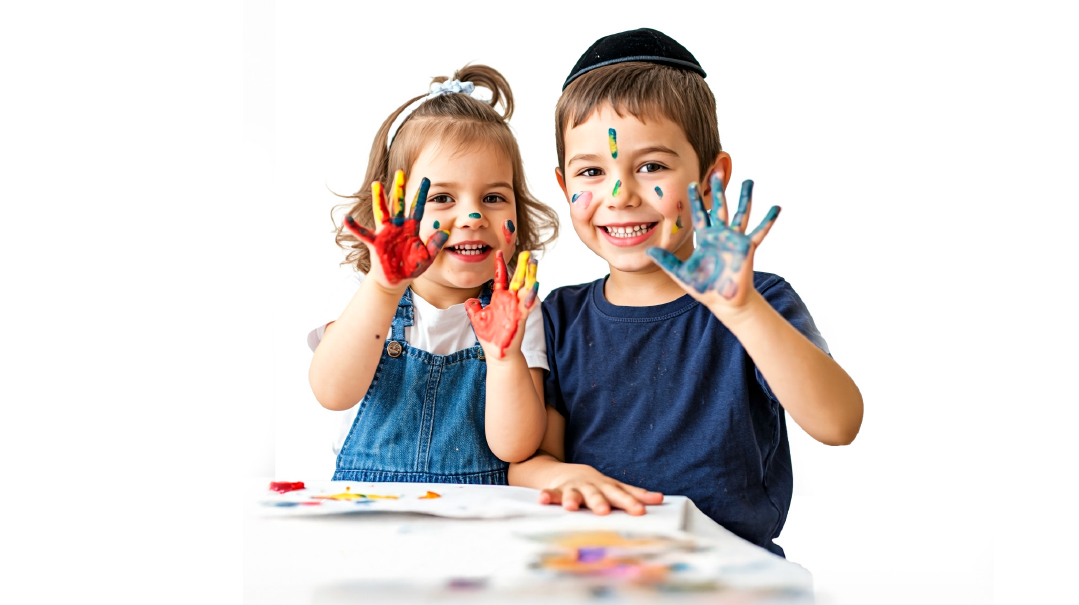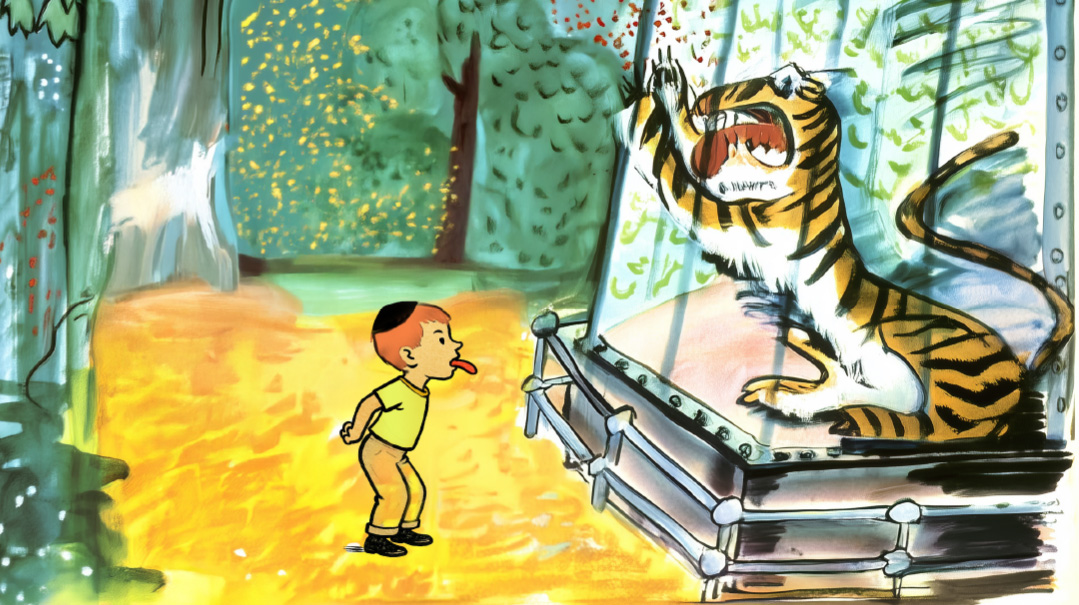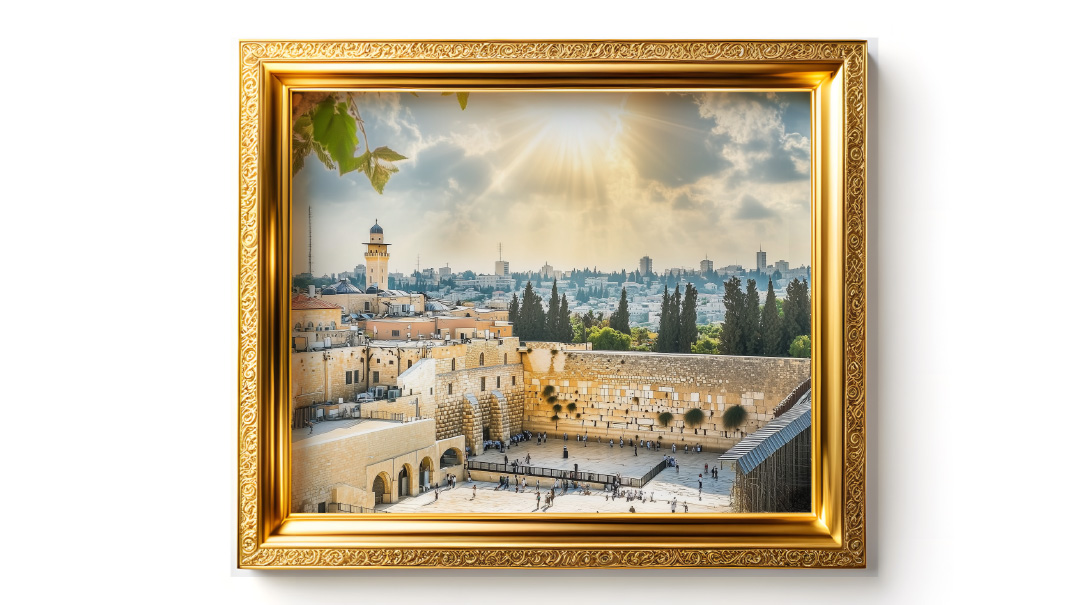Treasures or Trash?
| February 8, 2022I love reading my grandchildren the same picture books I read to their parents, but times have changed attitudes

One of my husband’s students looked at the open Korban Minchah siddur I was clenching in my hand when I opened the front door to let him into our house.
“The Rebbetzin,” he murmured with wide-opened eyes, “must have cried so many tears — the siddur’s pages are spotted brown.”
“I have smiled and wept for more than 50 years of davening from it,” I acknowledged, “but the true cause is acidification; most paper used from the mid-19th century to the end of the 20th century turns yellow and brittle.” In fact, in 1990, President Bush signed a bill requiring “federal records, books and publications of enduring value” be printed on acid-free permanent paper, which stays white.
I hold on to old seforim, books, and ephemera, but my children bury seforim and throw the other stuff away.
On the top of a bookcase, pushing against the ceiling, hibernate three piles of soft-covered, cheaply published Gemaras my husband learned from in elementary, high school, and yeshivah gedolah. The only handwriting was his tiny, neatly penciled-in name Yehuda — spelled with an alef at the end, instead of the more modern way of a hei — inside the front cover.
His top-of-the-line, oversized chassan Shas published 60 years ago is too heavy and ungainly for him to hold comfortably in his favorite learning position lying on the couch. A more manageable pocket-sized Gemara stands on the back of the couch next to the other seforim he learns from daily.
Instead of using old Gemaras and seforim, he prepares his shiurim from recently issued editions with clearer print and more accessible commentaries. I understand his choice, but I’m saddened by those old, worn-out, rejected volumes.
Included in the three piles on top of the bookcase are my sons’ old seforim. One son, who’s still in yeshivah at 42 years old, glossed his Gemaras with countless diagrams, explanations, random words, and doodles in rainbow colors. Loose pages are stuck in, and half-fallen out pages stick out unevenly. When he was a teen, I criticized him for not taking care of them, till I happily realized his Gemaras were falling apart from overuse, not underuse.
Now, his medium-sized chassan Shas stands proudly on his bottom bookshelves while he learns from newer copies with whiter pages, finer font, and additional commentaries. I retrieved his school Gemaras from sheimos because his children or grandchildren might be fascinated. Or maybe, to be more honest, I want to be reminded of those days.
In contrast, I hoard a scant handful of seforim from our son who is, sadly, disconnected from them. Aware that both his first and family names were the same as a well-known contemporary rosh yeshivah, Chaim wrote his name inside the front covers boldly in a big yet tidy script. I keep them with the hope that soon he, his children, and/or grandchildren will return to retrieve them.
I love reading my grandchildren the same picture books I read to their parents, but times have changed attitudes. I copied what my mother did. When I grew up, she supplemented the very few frum books available with secular books. Modesty and violence weren’t issues because in the 1950s in the US, people were very conservative.
Still, as I read to my children, I began to vigilantly reject depiction of detrimental non-Jewish concepts, especially in classic fairy tales and superhero adventures. At the same time, I’ve yearned to share the books I’d loved with them and their children.
Now, I read to my grandchildren what is acceptable to each set of parents, though I’ve squirreled away a few favorites to remember how loved I felt cuddling in my mother’s lap listening to her expressive reading voice.
When I tried to give my children the books they’d enjoyed listening to countless times, they didn’t want those copies with taped and crumbling pages, black dirt, fingerprints, food stains, and occasional scribbling. Instead, they buy new editions, often with multi-colored pictures. The old books alternated pages with scant lines of one or two colors with plain black-and-white illustrations.
My children throw away any book that’s torn or after pages fall out because their time is more valuable than the book. Keeping in mind the quote that a book changes each time a person reads it, I fix their books when I visit. I feel I’m holding onto all the times we’ve read the book together.
One Pesach Seder, I made the grandchildren laugh over what their father had written when he was their age — at six, ten, fourteen, fifteen-years-old. My wine-box collection of my children’s original drawings, craft projects, compositions, and sentences are as comforting as photos of them. I’m amassing a similar collection of grandchildren’s stuff which they routinely throw away.
Though I beg them to save me their stuff, often they lose patience with the overwhelming quantity. My most successful collecting time was when I babysat the local grandchildren weekly or visited my Israeli grandchildren a few times a year — which I couldn’t do for almost two years.
The walls of my hallways, bedrooms, living room, study, kitchen, and bathrooms are decorated with their artwork and homework. I made a mistake not to date or write which child was the artist or author, so now I’m very careful about my grandchildren signing and dating their creations. They can see what they did when they were younger and what their cousins did. Am I the family archivist?
Because no other child wanted them, I inherited the greeting cards my mother and mother-in-law saved. I continued my mother’s habit of buying greeting cards for family birthdays and anniversaries. Because my daughter shares my love of different cards with insightful messages, she gave me her collection when she consolidated her belongings to go on aliyah.
But when I visit my children’s homes, I often find cards I sent them in stacks of newspapers and unsorted ads earmarked to be thrown out eventually. My children remind me greeting cards are chad paami, literally for one time (use), yet to me they represent the happy occasions shared.
Every generation needs to do things differently than their parents. Perhaps my grandchildren will value holding books, drawings, and cards in their hands, although they’re available digitally. Meanwhile, I enjoy keeping them to remember the people I’ve loved.
(Originally featured in Family First, Issue 780)
Oops! We could not locate your form.






